Filter by

Empire Under the Microscope: Parasitology and the British Literary Imagination
This open access book considers science and empire, and the stories we tell ourselves about them. Using British Nobel laureate Ronald Ross (1857-1932) and his colleagues as access points to a wider professional culture,Empire Under the Microscopeexplores the cultural history of parasitology and its relationships with the literary and historical imagination between 1885 and 1935. Emilie Taylor-P…
- Edition
- -
- ISBN/ISSN
- 978-3030847166
- Collation
- oer.unej.ac.id
- Series Title
- -
- Call Number
- -

Handbook of Pathogens and Diseases in Cephalopods
The aim of this open access book is to facilitate the identification and description of the different organs as well as pathogens and diseases affecting the most representative species of cephalopods focussed on Sepia officinalis, Loligo vulgaris and Octopus vulgaris. These species are valuable ‘morphotype’ models and belong to the taxonomic groups Sepioidea, Myopsida and Octopoda, which in…
- Edition
- 1
- ISBN/ISSN
- 9783030113308
- Collation
- XV, 230 ill; lamp
- Series Title
- -
- Call Number
- -
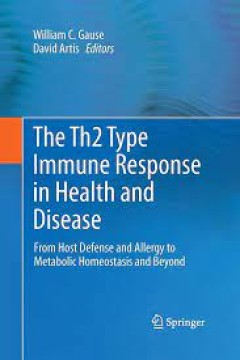
The Th2 Type Immune Response in Health and Disease From Host Defense and All…
The type 2 immune response that develops during infectious disease has undergone major paradigm shifts in the last several years as new cell types and pathways have been identified. It is now clear that the type 2 immune response, characterized by elevations in specific cytokines, including IL-4, IL-5 and IL-13, is associated with helminth infections in both humans and mice. This response is co…
- Edition
- -
- ISBN/ISSN
- 978-1-4939-2911-5
- Collation
- -
- Series Title
- -
- Call Number
- -
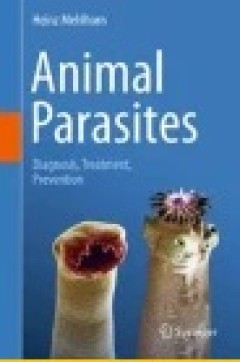
Animal Parasites: Diagnosis, Treatment, Prevention
This textbook focuses on the most important parasites affecting dogs, cats, ruminants, horses, pigs, rabbits, rodents, birds, fishes, reptiles and bees. For each parasite, the book offers a concise summary including its distribution, epidemiology, lifecycle, morphology, clinical manifestations, diagnosis, prophylaxis and therapeutic measures. Numerous informative tables and more than 500 color …
- Edition
- Ed. 1
- ISBN/ISSN
- 978-3-319-46403-9
- Collation
- XVII, 719
- Series Title
- -
- Call Number
- 616.96 MEH a
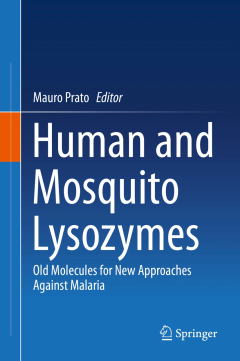
Human and Mosquito Lysozymes: Old Molecules for New Approaches Against Malaria
Malaria remains an alarming emergency in developing countries. It is thus urgent to identify any parasite or host molecules that can serve as new affordable markers for early diagnosis of disease complications or as new targets for vector control. In this context, human and mosquito lysozymes are good candidate molecules, as their involvement in malaria has been recently reported by several ind…
- Edition
- -
- ISBN/ISSN
- 978-3-319-09431-1
- Collation
- IX, 108
- Series Title
- -
- Call Number
- 616.96 HUM
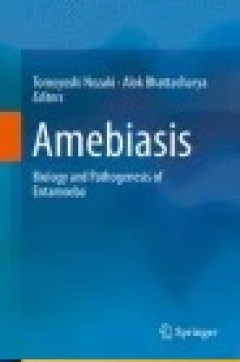
Amebiasis: Biology and Pathogenesis of Entamoeba
This book documents and presents new developments in the study of amebiasis, one of the neglected tropical diseases. Nearly 50 million people worldwide are infected with the pathogen Entamoeba histolytica, causing large-scale morbidity and mortality particularly in developing countries. This book will help clinicians for better diagnosis and management of the disease, researchers for initiating…
- Edition
- Ed. 1
- ISBN/ISSN
- 978-4-431-55200-0
- Collation
- IX, 581
- Series Title
- -
- Call Number
- 576.11 AME a
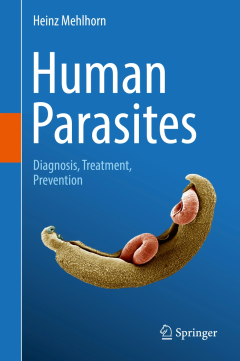
Human ParasitesLDiagnosis, Treatment, Prevention
This textbook provides an up-to-date overview of the most important parasites in humans and their potential vectors. For each parasite, the book offers a concise summary including its distribution, epidemiology, life cycle, morphology, clinical manifestations, diagnosis, prophylaxis and therapeutic measures. Numerous tables, diagrams and over 200 colorful illustrations highlight the main aspect…
- Edition
- -
- ISBN/ISSN
- 978-3-319-32801-0
- Collation
- -
- Series Title
- -
- Call Number
- 616.9 MEH h

Host Manipulations by Parasites and Viruses
This edited volume focuses on parasite-host relationships and the behavioral changes parasites may trigger in their hosts. Parasites have developed strategies which enhance their chances to find a host to survive inside its body and to become most easily transmitted to one another. Many of these parasites influence the host’s behavior by various mechanisms, so that the rate of their transmiss…
- Edition
- -
- ISBN/ISSN
- 978-3-319-22935-5
- Collation
- XII, 192
- Series Title
- -
- Call Number
- 574.5 HOS

Host Manipulations by Parasites and Viruses
This edited volume focuses on parasite-host relationships and the behavioral changes parasites may trigger in their hosts. Parasites have developed strategies which enhance their chances to find a host to survive inside its body and to become most easily transmitted to one another. Many of these parasites influence the host’s behavior by various mechanisms, so that the rate of their transmiss…
- Edition
- -
- ISBN/ISSN
- 978-3-319-22935-5
- Collation
- XII, 192
- Series Title
- -
- Call Number
- -

Herbal Insecticides, Repellents and Biomedicines: Effectiveness and Commercia…
This book looks closely at herbal product development and commercialisation. In spite of an ever-growing demand, there is a dearth of safe and effective herbal products that meet consumers’ expectations. Therefore, this book takes it upon itself to elaborate on the development process of herbal insecticides, repellents and biomedicines from a commercialisation point of view. The introductor…
- Edition
- -
- ISBN/ISSN
- 978-81-322-2702-1
- Collation
- XV, 258
- Series Title
- -
- Call Number
- 616.96
 Computer Science, Information & General Works
Computer Science, Information & General Works  Philosophy & Psychology
Philosophy & Psychology  Religion
Religion  Social Sciences
Social Sciences  Language
Language  Pure Science
Pure Science  Applied Sciences
Applied Sciences  Art & Recreation
Art & Recreation  Literature
Literature  History & Geography
History & Geography